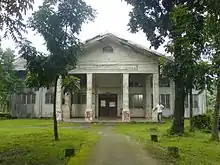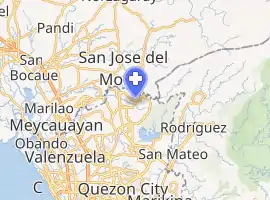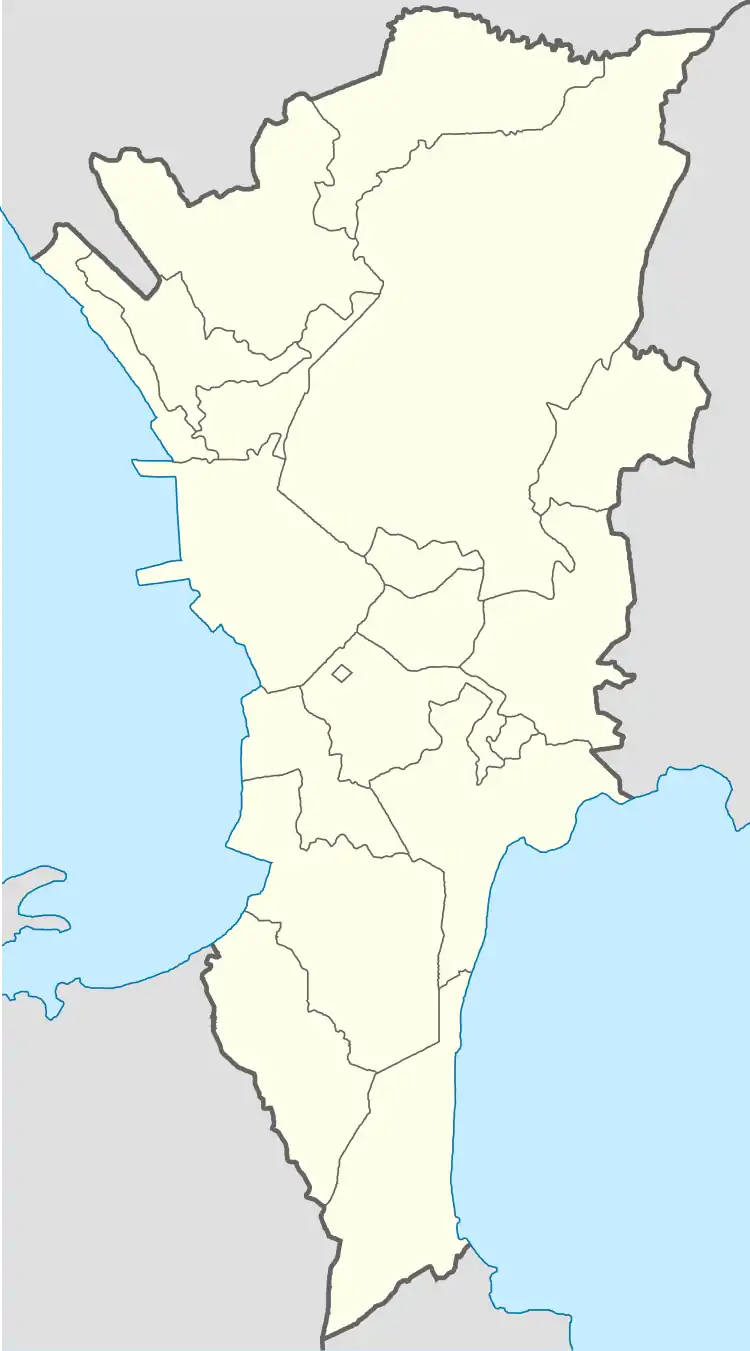Dr. Jose N. Rodriguez Memorial Hospital
The Dr. Jose N. Rodriguez Memorial Hospital (DJNRMH), formerly known as Central Luzon Sanitarium,[1] was established in 1940, to accommodate patients suffering from Hansen's Disease in the entire Luzon region in the Philippines. It is currently situated within the district of Tala, in Caloocan, Metro Manila, and occupies 130 hectares (320 acres) of land area, from the original 808 hectares (2,000 acres). The reduction of land area was to accommodate previous homeless treated patients who eventually settled and established their own community, called Tala.
| Dr. Jose N. Rodriguez Memorial Hospital | |
|---|---|
| Department of Health | |
 | |

| |
 .svg.png.webp) .svg.png.webp) | |
| Geography | |
| Location | Caloocan, Metro Manila, Philippines |
| Coordinates | 14°46′00″N 121°03′53″E |
| Organization | |
| Care system | Philippine Health Insurance Corporation (PhilHealth) accredited |
| Funding | Public hospital |
| Type | Tertiary |
| Services | |
| Beds | 2,000 |
| History | |
| Former name(s) | Central Luzon Sanitarium[1] |
| Opened | 1940 |
| Links | |
| Website | djnrmh |
In 1970, the hospital began treating general medical cases (non-Hansen disease patients) when there was a high success rate of treatment of the first Hansen patients from research and the advancement of procedures done within the current medical practice. Due to the significant drop of Hansen patients the hospital then considered admission of general cases.
The hospital currently serves as the principal referral hospital for leprosy patients and the premier training and research center for leprosy care and management in the Philippines. It also serves the public health needs of community members of Tala and nearby areas.
Services
| Out patient care | Orthopedic care |
| Dermatology | Reconstructive surgery |
| Internal medicine | Obstetrics and gynecology |
| Emergency services | Ophthalmology |
| Training of health workers for leprosy care and management | Orientation to leprosy control |
- Public Health Unit
The hospital also conducts other services available for appropriate patients such as physical therapy, occupational therapy, radiology, laboratory, medical-social services and assistance.
The DJNRMH today
Today, DJNRMH envisions becoming a Tertiary General Hospital and a Center for Rehabilitation and care of leprosy patients. There is a pending House Bill No. 1395 in the Philippine Congress converting 200 beds of the 2,000 beds of DJNRMH for tertiary general health care. While awaiting approval of this bill, DJNRMH's 2,000 beds is now being utilized for custodial care (1,800 beds) and general care for non-leprosy cases (200 beds).
Affiliations and linkages
The former sanitarium serves and attends to patients together with other recognized Philippine non-government organizations (NGO) and including nearby religious organizations and Churches that send contributions and visit abandoned or dying patients for religious services and rites whenever applicable.
 Pediatric ward
Pediatric ward Serene environment of the hospital
Serene environment of the hospital
References
- "B.P. Blg. 94: An Act Renaming the Central Luzon Sanitarium at Tala, City of Caloocan, as Dr. Jose N. Rodriguez Memorial Hospital". The Corpus Juris. 24 December 1980. Retrieved 18 April 2020.